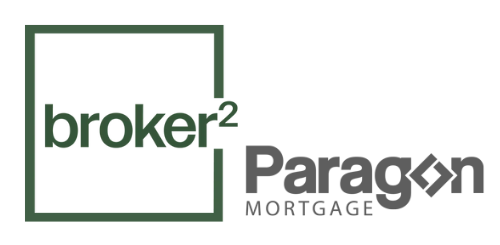Bank of Canada Rate Announcement July 15th, 2020
Sukh Sohal • July 15, 2020

Bank of Canada will maintain current level of policy rate until inflation objective is achieved, continues program of quantitative easing.
The Bank of Canada today maintained its target for the overnight rate at the effective lower bound of ¼ percent. The Bank Rate is correspondingly ½ percent and the deposit rate is ¼ percent. The Bank is also continuing its quantitative easing (QE) program, with large-scale asset purchases of at least $5 billion per week of Government of Canada bonds. The Bank’s short-term liquidity programs announced since March to improve market functioning are having their intended effect and, with reduced market strains, their use has declined. The provincial and corporate bond purchase programs will continue as announced. The Bank stands ready to adjust its programs if market conditions warrant.
While economies are re-opening, the global and Canadian outlook is extremely uncertain, given the unpredictability of the course of the COVID-19 pandemic. Reflecting this, the Bank’s July Monetary Policy Report (MPR) presents a central scenario for global and Canadian growth rather than the usual economic projections. The central scenario is based on assumptions outlined in the MPR, including that there is no widespread second wave of the virus.
After a sharp drop in the first half of 2020, global economic activity is picking up. This return to growth reflects the relaxation of necessary containment measures put in place to slow the spread of the coronavirus, combined with extraordinary fiscal and monetary policy support. As a result, financial conditions have improved. The prices of most commodities, including oil, have risen from very low levels. In the central scenario, the global economy overall shrinks by about 5 percent in 2020 and then grows by around 5 percent on average in 2021 and 2022. The timing and pace of the recovery varies among regions and could be hampered by a resurgence of infections and the limited capacity of some countries to contain the virus or support their economies.
The Canadian economy is starting to recover as it re-opens from the shutdowns needed to limit the virus spread. With economic activity in the second quarter estimated to have been 15 percent below its level at the end of 2019, this is the deepest decline in economic activity since the Great Depression, but considerably less severe than the worst scenarios presented in the April MPR. Decisive and necessary fiscal and monetary policy actions have supported incomes and kept credit flowing, cushioning the fall and laying the foundation for recovery. Since early June, the government has announced additional support programs, and extended others.
There are early signs that the reopening of businesses and pent-up demand are leading to an initial bounce-back in employment and output. In the central scenario, roughly 40 percent of the collapse in the first half of the year is made up in the third quarter. Subsequently, the Bank expects the economy’s recuperation to slow as the pandemic continues to affect confidence and consumer behaviour and as the economy works through structural challenges. As a result, in the central scenario, real GDP declines by 7.8 percent in 2020 and resumes with growth of 5.1 percent in 2021 and 3.7 percent in 2022. The Bank expects economic slack to persist as the recovery in demand lags that of supply, creating significant disinflationary pressures.
CPI inflation is close to zero, pulled down by sharp declines in components such as gasoline and travel services. The Bank’s core measures of inflation have drifted down, although by much less than the CPI, and are now between 1.4 and 1.9 percent. Inflation is expected to remain weak before gradually strengthening toward 2 percent as the drag from low gas prices and other temporary effects dissipates and demand recovers, reducing economic slack.
As the economy moves from reopening to recuperation, it will continue to require extraordinary monetary policy support. The Governing Council will hold the policy interest rate at the effective lower bound until economic slack is absorbed so that the 2 percent inflation target is sustainably achieved. In addition, to reinforce this commitment and keep interest rates low across the yield curve, the Bank is continuing its large-scale asset purchase program at a pace of at least $5 billion per week of Government of Canada bonds. This QE program is making borrowing more affordable for households and businesses and will continue until the recovery is well underway. To support the recovery and achieve the inflation objective, the Bank is prepared to provide further monetary stimulus as needed.
Information note
The next scheduled date for announcing the overnight rate target is September 9, 2020. The next full update of the Bank’s outlook for the economy and inflation, including risks to the projection, will be published in the MPR on October 28, 2020.
RECENT POSTS

Need to Free Up Some Cash? Your Home Equity Could Help If you've owned your home for a while, chances are it’s gone up in value. That increase—paired with what you’ve already paid down—is called home equity, and it’s one of the biggest financial advantages of owning property. Still, many Canadians don’t realize they can tap into that equity to improve their financial flexibility, fund major expenses, or support life goals—all without selling their home. Let’s break down what home equity is and how you might be able to use it to your advantage. First, What Is Home Equity? Home equity is the difference between what your home is worth and what you still owe on it. Example: If your home is valued at $700,000 and you owe $200,000 on your mortgage, you have $500,000 in equity . That’s real financial power—and depending on your situation, there are a few smart ways to access it. Option 1: Refinance Your Mortgage A traditional mortgage refinance is one of the most common ways to tap into your home’s equity. If you qualify, you can borrow up to 80% of your home’s appraised value , minus what you still owe. Example: Your home is worth $600,000 You owe $350,000 You can refinance up to $480,000 (80% of $600K) That gives you access to $130,000 in equity You’ll pay off your existing mortgage and take the difference as a lump sum, which you can use however you choose—renovations, investments, debt consolidation, or even a well-earned vacation. Even if your mortgage is fully paid off, you can still refinance and borrow against your home’s value. Option 2: Consider a Reverse Mortgage (Ages 55+) If you're 55 or older, a reverse mortgage could be a flexible way to access tax-free cash from your home—without needing to make monthly payments. You keep full ownership of your home, and the loan only becomes repayable when you sell, move out, or pass away. While you won’t be able to borrow as much as a conventional refinance (the exact amount depends on your age and property value), this option offers freedom and peace of mind—especially for retirees who are equity-rich but cash-flow tight. Reverse mortgage rates are typically a bit higher than traditional mortgages, but you won’t need to pass income or credit checks to qualify. Option 3: Open a Home Equity Line of Credit (HELOC) Think of a HELOC as a reusable credit line backed by your home. You get approved for a set amount, and only pay interest on what you actually use. Need $10,000 for a new roof? Use the line. Don’t need anything for six months? No payments required. HELOCs offer flexibility and low interest rates compared to personal loans or credit cards. But they can be harder to qualify for and typically require strong credit, stable income, and a solid debt ratio. Option 4: Get a Second Mortgage Let’s say you’re mid-term on your current mortgage and breaking it would mean hefty penalties. A second mortgage could be a temporary solution. It allows you to borrow a lump sum against your home’s equity, without touching your existing mortgage. Second mortgages usually come with higher interest rates and shorter terms, so they’re best suited for short-term needs like bridging a gap, paying off urgent debt, or funding a one-time project. So, What’s Right for You? There’s no one-size-fits-all solution. The right option depends on your financial goals, your current mortgage, your credit, and how much equity you have available. We’re here to walk you through your choices and help you find a strategy that works best for your situation. Ready to explore your options? Let’s talk about how your home’s equity could be working harder for you. No pressure, no obligation—just solid advice.

Ready to Buy Your First Home? Here’s How to Know for Sure Buying your first home is exciting—but it’s also a major financial decision. So how can you tell if you’re truly ready to take that leap into homeownership? Whether you’re confident or still unsure, these four signs are solid indicators that you’re on the right path: 1. You’ve Got Your Down Payment and Closing Costs in Place To purchase a home in Canada, you’ll need at least 5% of the purchase price as a down payment. In addition, plan for around 1.5% to 2% of the home’s value to cover closing costs like legal fees, insurance, and adjustments. If you’ve managed to save this on your own, that’s a great sign of financial discipline. If you're receiving help from a family member through a gifted down payment , that works too—as long as the paperwork is in order. Either way, having these funds ready shows you’re prepared for the upfront costs of homeownership. 2. Your Credit Profile Tells a Good Story Lenders want to know how you manage debt. Before they approve you for a mortgage, they’ll review your credit history. What they typically like to see: At least two active credit accounts (trade lines) , like a credit card or loan Each with a minimum limit of $2,000 Open and active for at least 2 years Even if your credit isn’t perfect, don’t panic. There may still be options, such as using a co-signer or working on a credit improvement plan with a mortgage expert. 3. Your Income Can Support Homeownership—Comfortably A steady income is essential, but not all income is treated equally. If you’re full-time and past probation , you’re in a strong position. If you’re self-employed, on contract, or rely on variable income like tips or commissions, you’ll generally need a two-year history to qualify. A general rule: housing costs (mortgage, taxes, utilities) should stay under 35% of your gross monthly income . That leaves plenty of room for other living expenses, savings, and—yes—some fun too. 4. You’ve Talked to a Mortgage Professional Let’s be real—there’s a lot of info out there about buying a home. Google searches and TikToks can only take you so far. If you're serious about buying, speaking with a mortgage professional is the most effective next step. Why? Because you'll: Get pre-approved (and know what price range you're working with) Understand your loan options and the qualification process Build a game plan that suits your timeline and financial goals The Bottom Line: Being “ready” to buy a home isn’t just about how much you want it—it’s about being financially prepared, credit-ready, and backed by expert advice. If you’re thinking about homeownership, let’s chat. I’d love to help you understand your options, crunch the numbers, and build a plan that gets you confidently across the finish line—keys in hand.





